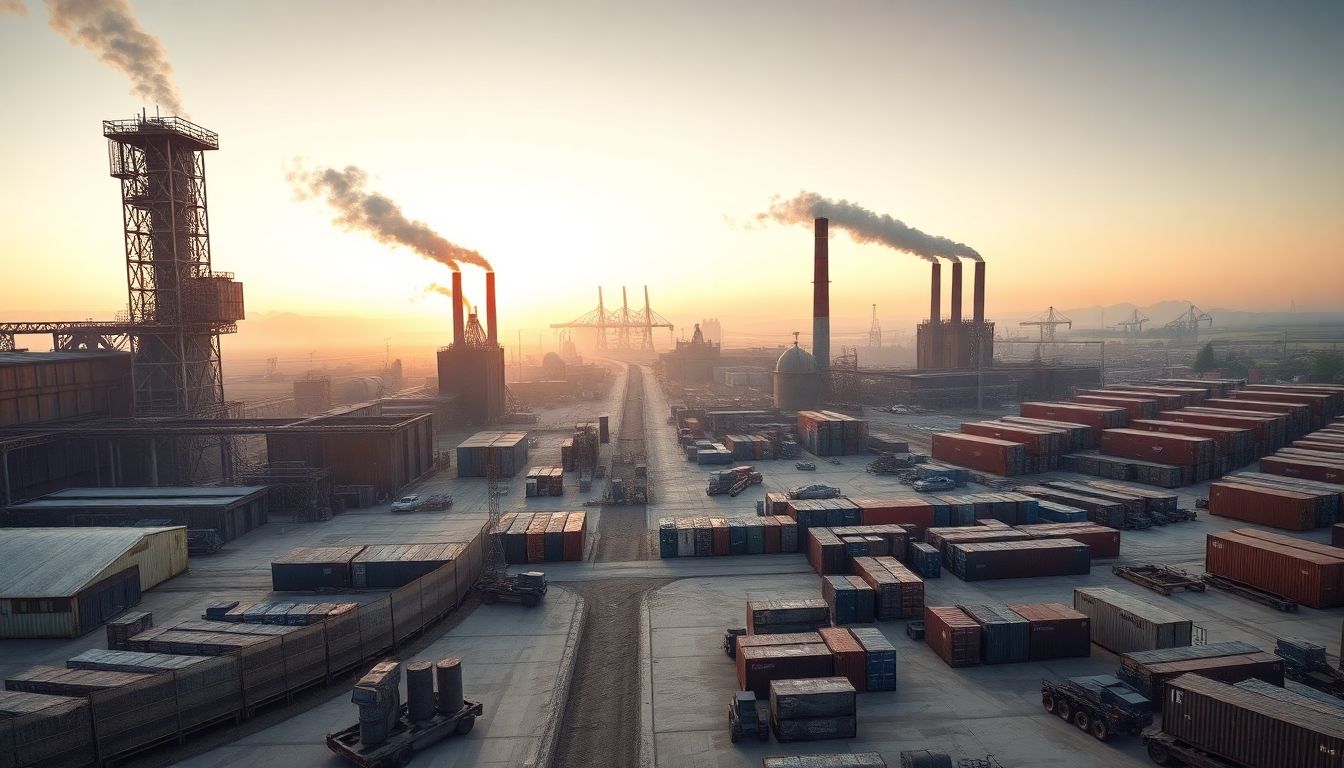An Overview
The industrial areas of the United Kingdom are driven and energized by the economy. Factories are being built, but from the perspective of many authors, economic activity encompasses the technological support for producing outstanding products and creating thousands of jobs. These factors, both external and internal, shape local communities and urban areas. Industrial districts are undergoing rapid change, embracing technological advances for sustainability. Today, there is a balance between maintaining traditional industries and fostering innovation and sustainability in the industrial sectors.
History of the Industrial Area Development in Great Britain: The Growth of its Heritage
History of Industrial Districts
Industrialization in the UK has been ongoing for over three hundred years. The 18th and 19th centuries were pivotal in shaping the industrial landscape, with cities such as Birmingham, Manchester, and Sheffield becoming prominent for steel, textiles, and tools. These areas turned their respective regions into industrial powerhouses, contributing significantly to Britain’s status as a manufacturing superpower.
Modern Industrial Districts: From Renaissance to Deindustrialization
As the old factories were replaced by empty brownfields, deindustrialization in the 20th century took a toll on the industrial sector. However, innovation and regeneration efforts have helped revitalize many industrial areas. Today, regions that once thrived on manufacturing are now cultivating high-value industries, such as logistics and green technologies. Renewal schemes are bringing these areas back into urban relevance, combining past industrial heritage with forward-thinking agendas.
Key Industrial Hubs in the UK
Northern Powerhouses
The northern cities of Manchester, Leeds, and Liverpool remain key players in manufacturing, aerospace, and the digital sectors. These cities boast robust transportation networks and a skilled workforce, positioning them as competitive hubs. The region is increasingly active in emerging technologies, transforming former industrial factories into modern industrial hubs.
The Heart of Industrial Districts of the Midlands
The Midlands region is famous for its strong presence in car manufacturing, engineering, and logistics. Cities like Birmingham, Coventry, and Derby are known for their car production, with companies like Jaguar and Land Rover leading the way. The Midlands remains central to the UK’s industrial economy, with its manufacturing sector continuing to drive growth.
Southern and Coastal Outlying Industrial Locations
The southern parts of the UK, blessed with ports and airports, play a vital role in the country’s industrial activities. Cities like Southampton and Portsmouth handle a vast amount of goods that are transported in and out every day. Airbus, located in Filton, is a major name in aerospace. Additionally, the Thames Estuary is becoming a hub for renewable energy projects. These regions are vital to exports and green industries.
Key Factors Influencing the Growth of Industrial Areas in the UK
Infrastructure and Connectivity
Infrastructure and connectivity are key factors in the growth of industrial areas. Modern transportation networks, including railways, ports, and airports, help industries thrive by enabling efficient distribution and supply chains. Reliable infrastructure ensures that goods can move easily across regions, fueling growth in industrial sectors.
Invention in Technology
Modern technologies are reshaping industrial practices. Industry 4.0, which includes automation, IoT (Internet of Things), and AI, is changing the way factories operate. These technologies help improve productivity, reduce costs, and boost competitiveness among firms. The integration of such technologies is crucial for sustaining industrial growth and keeping the UK’s manufacturing sector competitive on the global stage.
Industrial Areas Challenges in the UK
Environmental and Sustainability Challenges
Industrial zones face significant environmental challenges. Factories produce emissions and waste, and there is a growing need for green energy alternatives. To survive and thrive, industrial zones must adopt sustainable practices. Many regions in the UK are working toward more eco-friendly solutions, but much work remains to be done to meet the environmental standards of the future.
Workforce and Skills Shortage
As industries evolve, there is a growing demand for workers with new skills. The rapid pace of technological advancement means that workers must adapt to new processes and tools. Training programs and educational initiatives will be essential to bridge the skills gap and prepare the workforce for the jobs of tomorrow.
Economic and Political Uncertainties
Brexit has introduced new trade rules, creating uncertainty in investment decisions. Industrial businesses now have to navigate changing policies, tariffs, and regulations, making investment riskier. These uncertainties add complexity to business operations, especially for companies involved in international trade.
Future Trends and Opportunities for UK Industrial Areas
Green Industrial Growth
Renewable energy investments will continue to play a crucial role in the UK’s industrial future. Wind farms, solar energy projects, and green factories are set to emerge as key components of the industrial landscape. Stricter sustainability requirements will apply to new industrial developments, making these areas greener and more efficient.
Technological Innovations and Digital Transformations
The future of industrial areas will be heavily influenced by technological innovations. Intelligent factories that leverage AI and supply chain technologies will become more common. These technologies will reduce costs, improve efficiency, and enhance the competitiveness of UK industries. Collaboration with research institutions and innovation hubs will further accelerate progress.
Resilience and Adaptation Strategies
Industries will increasingly diversify to reduce dependency on a single sector, making them more resilient to global economic shocks. Improved supply chains will help areas better withstand systemic challenges, ensuring that industrial areas remain competitive and sustainable in the face of changing global conditions.
Conclusion
The industrial areas of the UK are rapidly shifting from traditional factories to centers of innovation and green growth. Government support, infrastructure improvements, and technological advancements have made these changes possible. While challenges such as pollution and skill gaps remain, the outlook for industrial areas is positive. Investments made today in these areas will likely pay off in the future, as the key to success lies in adaptability and sustainable growth.
